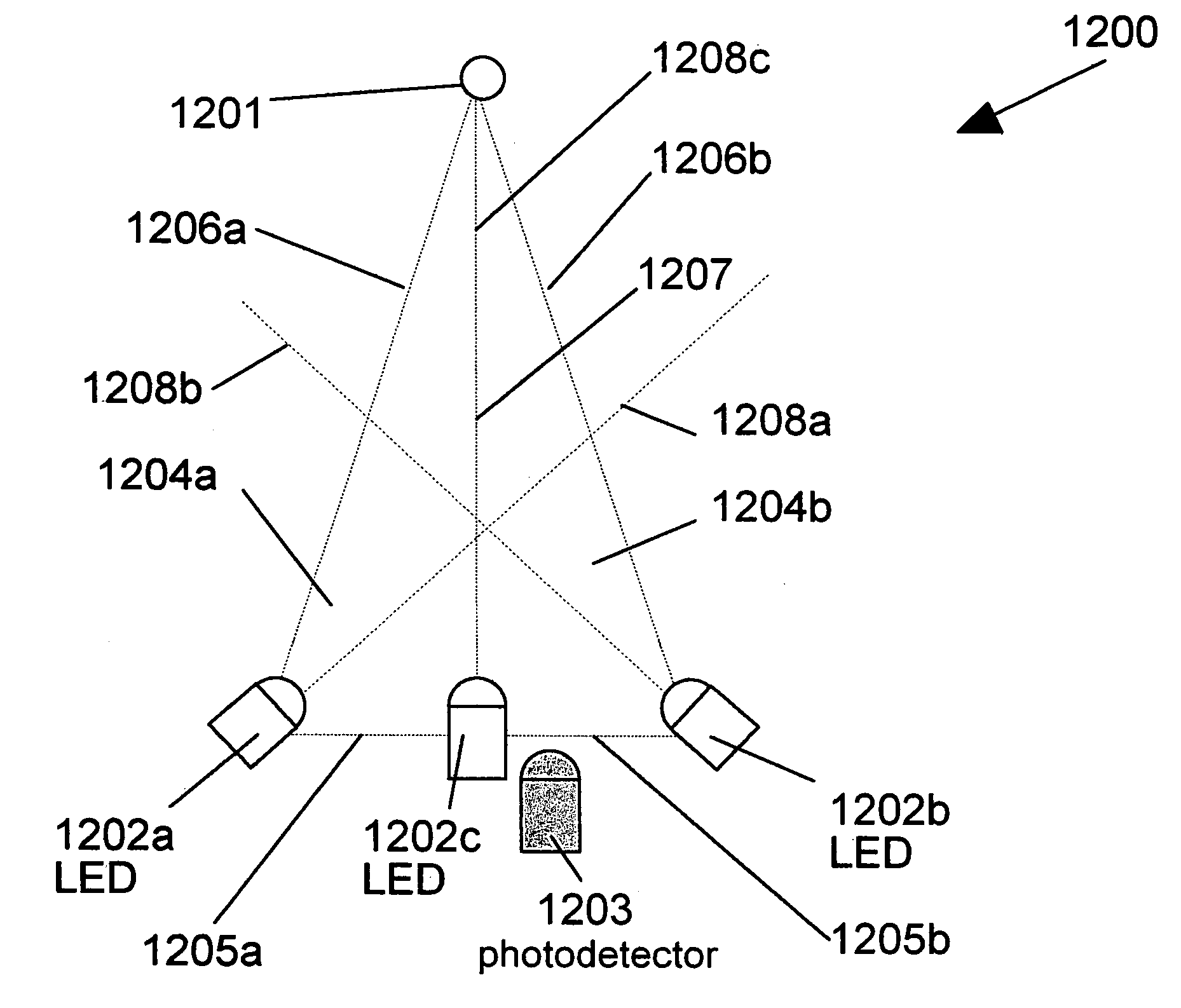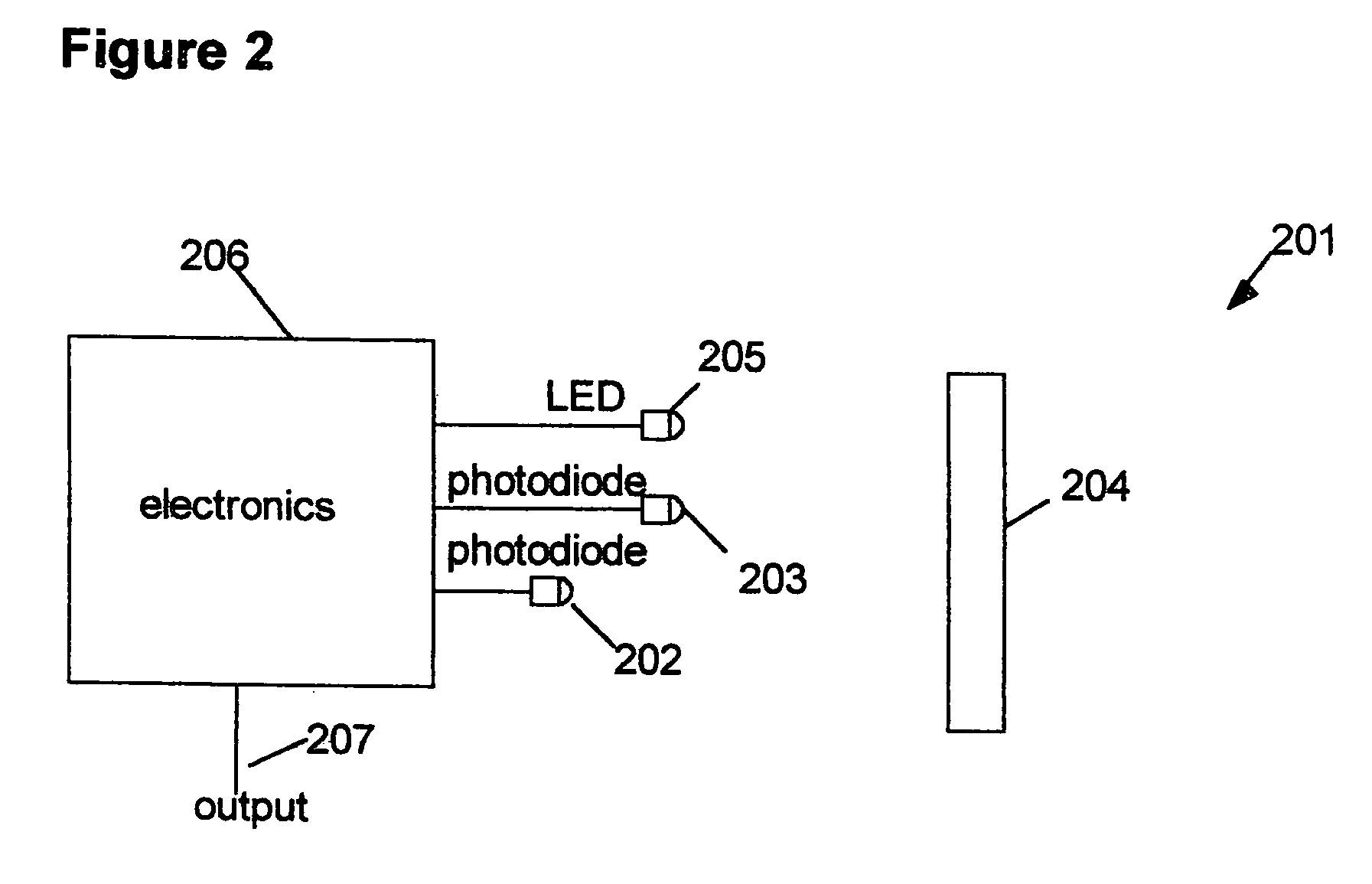Method and apparatus for measuring distances using light
a technology of distance measurement and light, applied in distance measurement, height/levelling measurement, instruments, etc., can solve the problems of high noise into the overall system, too complex optics of lasers and optics in such approaches, and too expensive for budget limited or highly miniaturized applications, etc., to achieve the effect of convenient us
- Summary
- Abstract
- Description
- Claims
- Application Information
AI Technical Summary
Benefits of technology
Problems solved by technology
Method used
Image
Examples
embodiment 201
[0032]FIG. 2 shows a diagram of an alternate embodiment 201 of the distance measuring system of the present invention. In this embodiment, a single light source 205 is used to illuminate an object 204. Two light detectors 202 and 203, preferably photodiodes, are located at different direct (straight line) distances from the object 204. Preferably, the light detectors 202 and 203 and the light source 205 are located adjacent each other and contained in a single unit. Typically, the near light detector 203 is from 2 to 10 centimeters closer to the object 204 than the far light detector 202. Preferably, the light detectors 202 and 203 are located and oriented relative to each other and the light source 205 so that the light beam emitted by the light source 205 and the resulting reflected light beams from the object 204 detected by the light detectors 202 and 203 are substantially collinear over a distance measuring range selected for the system. The emitted light beams and the reflecte...
embodiment 101
[0040]In all embodiments of the present invention described above, a set of two or more light intensity measurements are obtained for each distance measurement desired. The algorithm to calculate distances from the light intensities is described here in connection with embodiment 101, but applies equally to embodiments 201 and 301.
[0041]The algorithm is based on a mathematical illumination model. In the preferred embodiment of the invention, the algorithm is based on a diffuse reflection illumination model (see Foley & van Dam, “Fundamentals of Interactive Computer Graphics”, Addison-Wesley Publishing Company, Inc., ©) 1982, pp. 575–580). Preferably, if it is assumed that the direct (straight line) spacing between light sources 102 and 103 is given by D, the unknown distance from the light source 103 to object 104 is L, and the surface angle of object 104 with respect to the direction of light source 103 is Q, the light intensity detected by light detector 105 from light source 103,...
PUM
 Login to View More
Login to View More Abstract
Description
Claims
Application Information
 Login to View More
Login to View More - R&D
- Intellectual Property
- Life Sciences
- Materials
- Tech Scout
- Unparalleled Data Quality
- Higher Quality Content
- 60% Fewer Hallucinations
Browse by: Latest US Patents, China's latest patents, Technical Efficacy Thesaurus, Application Domain, Technology Topic, Popular Technical Reports.
© 2025 PatSnap. All rights reserved.Legal|Privacy policy|Modern Slavery Act Transparency Statement|Sitemap|About US| Contact US: help@patsnap.com



